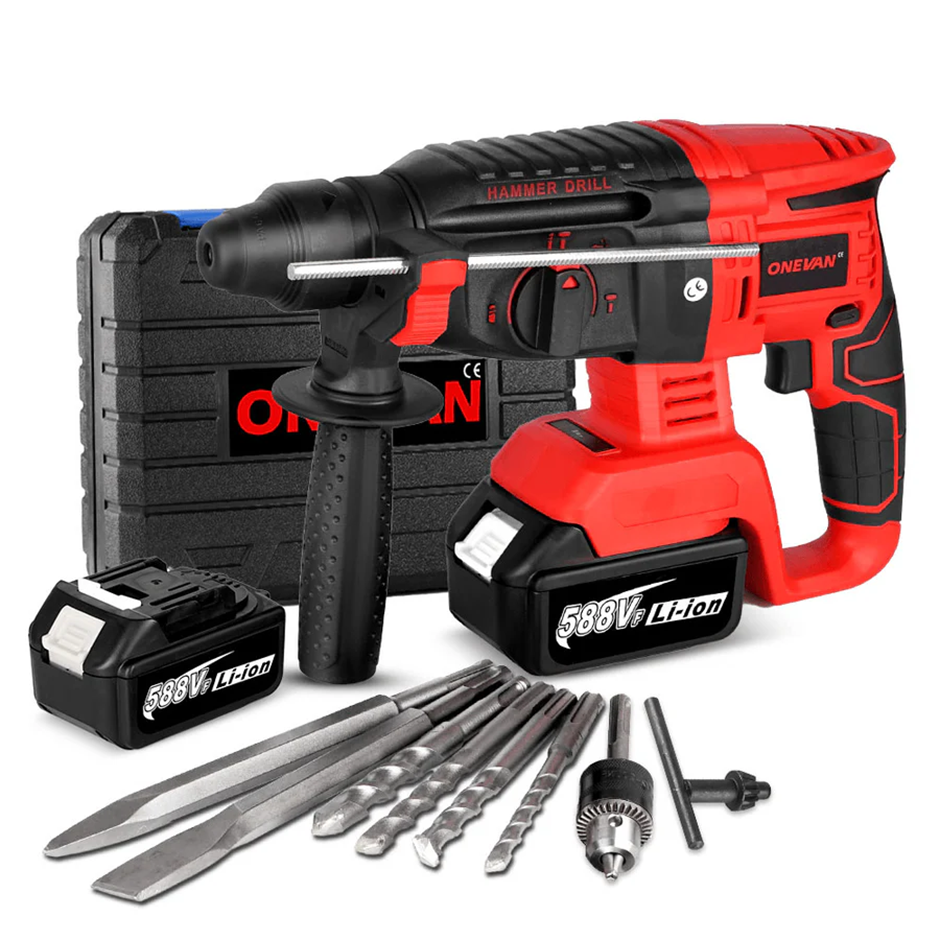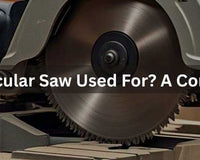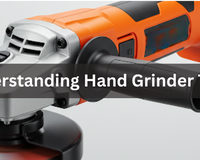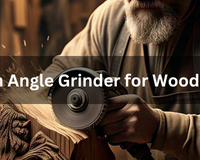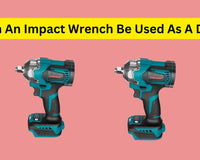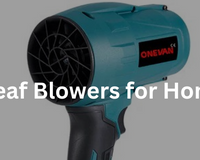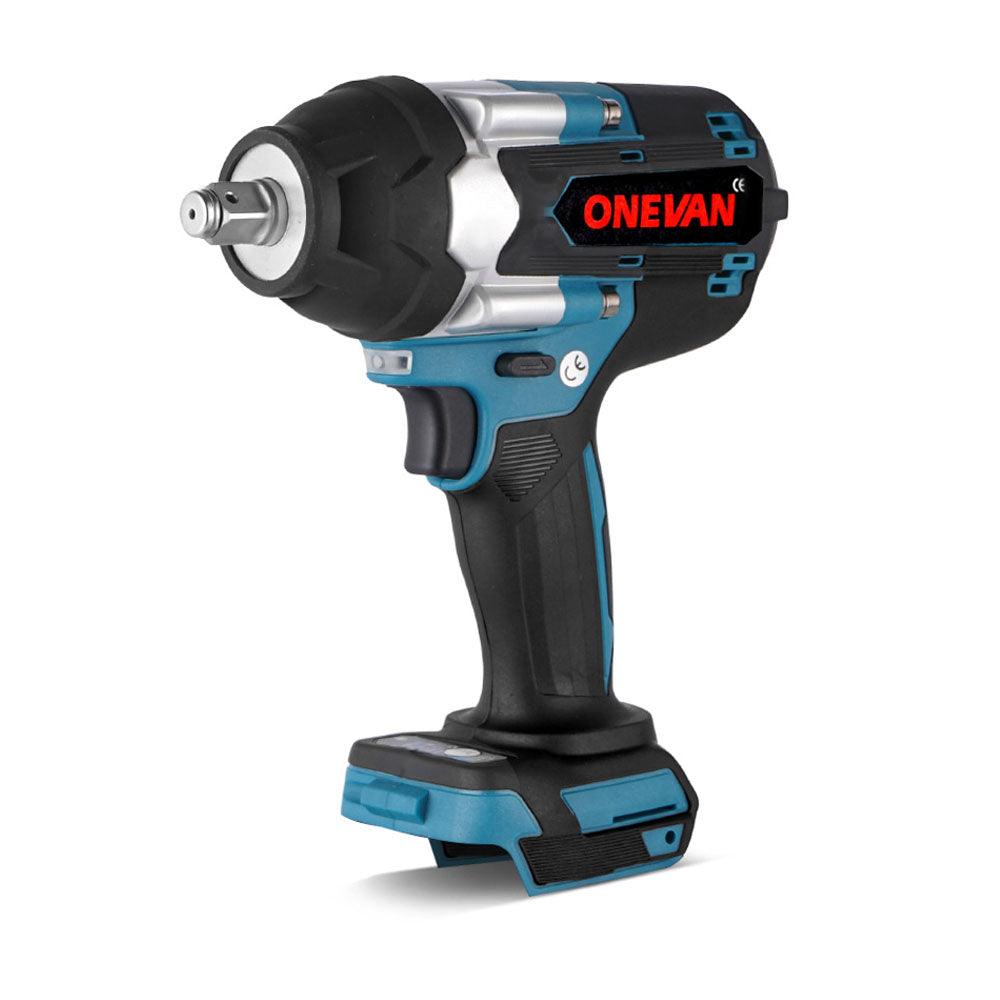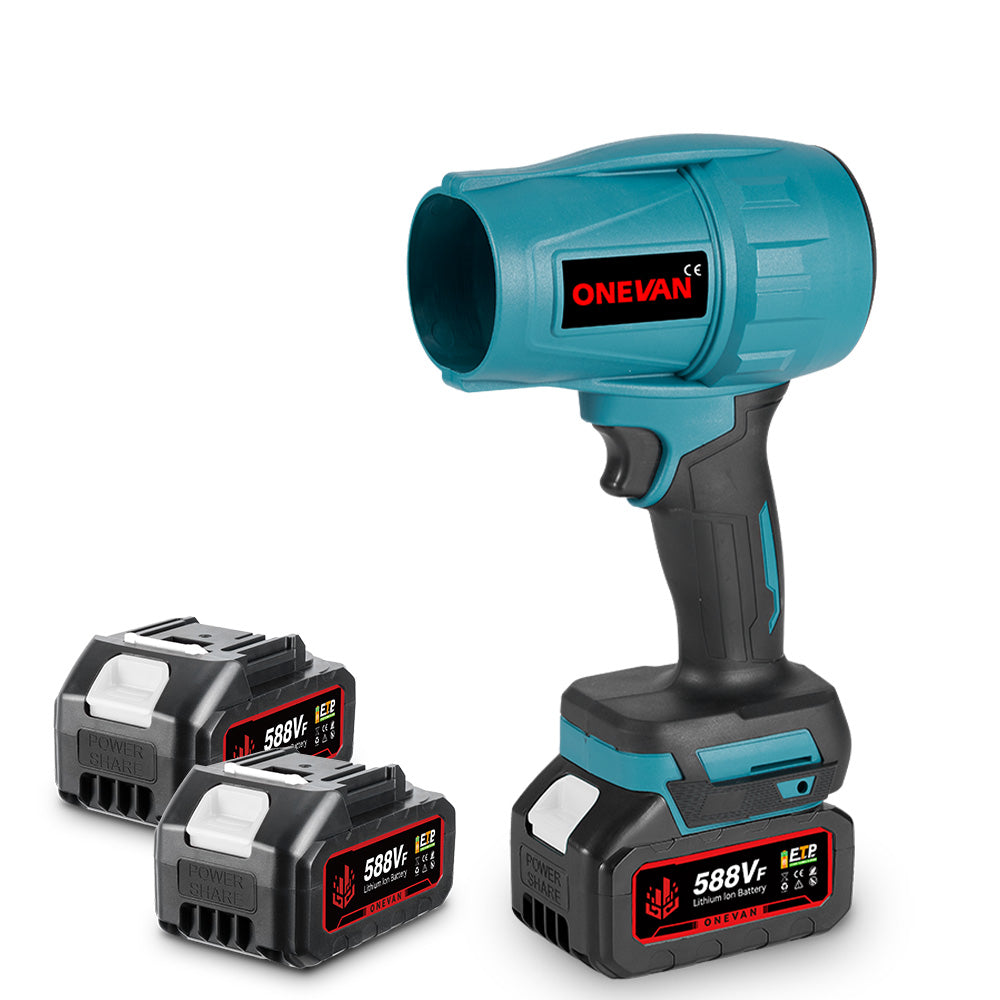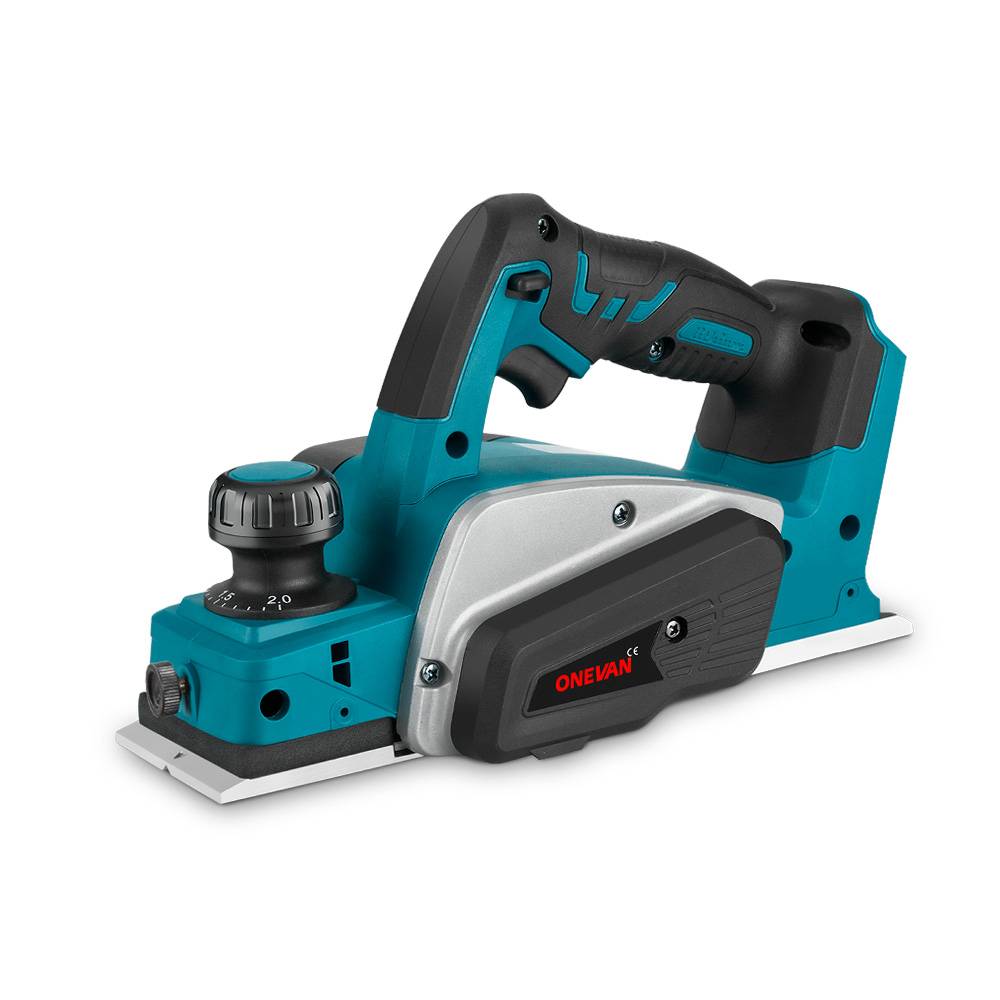Uma furadeira de impacto é uma ferramenta potente com ação rotativa e de percussão. Essa dupla ação a torna adequada para tarefas pesadas, como perfurar concreto.
Neste post, discutiremos as furadeiras de impacto em detalhes. Falaremos sobre seus componentes, usos e tudo mais. Vamos começar!
1. O que são furadeiras de impacto?
Como discutimos, a função principal de uma furadeira de impacto é perfurar superfícies duras. Mas, se você desativar a ação de martelar, também poderá usá-la como uma parafusadeira.
As furadeiras de impacto são compostas por vários componentes, cada um com uma função específica. Essas peças e suas funções são as seguintes:
Componentes de uma furadeira de impacto:
- Motor: A principal fonte de energia da furadeira. Pode ser com ou sem escovas.
- Mandris: Mantêm as brocas e outros acessórios no lugar. Exemplos incluem mandris com chave, mandris sem chave e mandris SDS (sistema de acionamento por ranhura).
- Interruptor: Para escolher entre os modos de martelamento e rotação.
- Brocas: são as ferramentas de corte que removem material e criam furos na superfície alvo. Elas vêm em vários formatos e tamanhos.
- Luz LED: Para ter uma melhor visão do local de perfuração e melhorar a precisão.
- Interruptor de controle de velocidade: para controlar a velocidade com que a furadeira martela.
- Pilhas (apenas para furadeiras sem fio)
- Caixa de engrenagens: Está presente no núcleo da furadeira e ajuda a controlar a potência e o torque.
- Sistema de amortecimento: Para evitar vibrações desnecessárias que a furadeira possa produzir.
- Batentes de perfuração: são mecanismos ajustáveis que limitam a profundidade de penetração da broca no material.
Quais são as diferenças entre furadeiras de martelo e furadeiras rotativas?
As furadeiras rotativas têm apenas ação rotativa. As furadeiras de martelo realizam tanto o impacto quanto a rotação. As furadeiras rotativas podem ser usadas em superfícies mais macias, como madeira e metal. As furadeiras de martelo, devido à sua ação de impacto, são adequadas para materiais duros.
As furadeiras de martelo geralmente oferecem a opção de desligar a ação de martelar. Você também pode usá-las como furadeiras rotativas.
2. Como funciona uma furadeira de impacto?
Um motor elétrico fornece energia mecânica que alimenta a furadeira. Ele gira o eixo do motor.
Esta rotação é sincronizada com a caixa de engrenagens e o mandril. Usando a caixa de engrenagens, você pode ajustar a potência e a velocidade de rotação.
O eixo giratório movimenta o mandril. O mandril está preso à broca. Portanto, ele também gira.
Para a ação de martelar, o eixo do motor também é conectado a dois cames/engrenagens. Conforme o motor gira, essas duas engrenagens giram uma em direção à outra.
As engrenagens são projetadas para criar um movimento de percussão, que impulsiona a broca para frente a cada rotação, permitindo que ela penetre em materiais mais duros, o que cria o movimento de martelar e golpear.
Usos comuns de uma furadeira de martelo
Utilizamos furadeiras de impacto extensivamente em residências e indústrias. A seguir, alguns exemplos comuns:
Perfuração em materiais duros
Essas brocas são ideais para trabalhos pesados. Por isso, são usadas em alvenaria para perfurar tijolos. Também podem ser usadas para perfurar pedras duras para fins de ancoragem. Recomenda-se usá-las principalmente em pedras duras para obter o desempenho ideal, enquanto pedras mais macias, como calcário, podem ser perfuradas, mas podem exigir técnicas específicas para evitar danos.
Projetos de Construção e Reforma
Você pode usar furadeiras de impacto para criar pontos de fixação de prateleiras e armários. Elas também são necessárias para fixar cantoneiras e parafusos de fixação. Como as paredes da casa são feitas de concreto, furadeiras comuns não conseguem perfurá-las.
Melhoria da casa faça você mesmo
Se você faz ajustes em sua casa de vez em quando, sabe que precisa furar furos para buchas com frequência. Furadeiras de impacto ajudam a furar furos para buchas ao instalar novos armários nas paredes ou montar uma TV pesada. Você pode instalar luzes externas ou remover luminárias antigas facilmente com furadeiras de impacto.
Trabalho de alvenaria
Diferentes tipos de ancoragens são usados em alvenaria. Exemplos são ancoragens de impacto, ancoragens de luva, parafusos de concreto e ancoragens de cravação. Cada uma delas tem uma função específica. A furadeira de impacto é usada para fixar essas ancoragens.
Trabalhadores da construção civil também usam essas furadeiras para fins de demolição. Um exemplo comum é a reconstrução de calçadas. As furadeiras de impacto perfuram o concreto. Este é então quebrado com um martelo e um cinzel.
Outras aplicações especializadas
Você também pode usar furadeiras de impacto para remover e substituir azulejos em edifícios. Os azulejos quebrados são removidos perfurando-os.
Um exemplo muito especial a ser observado é o uso dessas furadeiras para misturar concreto, argamassa e cimento durante a construção. Isso é feito com acessórios de pá . Quando outras opções não estão disponíveis, furadeiras de impacto e acessórios de pá podem misturar facilmente o material de construção e economizar muito tempo e esforço.
3. Escolhendo a furadeira de impacto certa
Existem diversos tipos de furadeiras de impacto. Seria útil escolher a furadeira de impacto que melhor atende às necessidades específicas do seu projeto. Então, primeiro, vamos dar uma rápida olhada nos tipos de furadeiras de impacto.
3.1 Tipos de furadeiras de impacto
As furadeiras de martelo geralmente podem ser divididas em categorias com fio e sem fio.
Com fio:
Essas furadeiras exigem uma fonte de alimentação constante. As furadeiras de impacto com fio são adequadas para trabalhos de grande porte. Elas também são suas furadeiras preferidas em situações que exigem uso contínuo.
Alguns tipos especializados de furadeiras de impacto que geralmente são com fio são os seguintes:
Martelos perfuradores SDS:
SDS significa Slotted Drive System (Sistema de Acionamento com Fenda). Essas furadeiras utilizam um sistema de mandril. São mais resistentes e utilizadas em projetos comerciais maiores.
Martelos Rotativos: Os martelos rotativos utilizam um mecanismo de percussão eletropneumático. Possuem dois pistões. Um se move para frente e para trás dentro de um cilindro e o outro é o pistão flutuante presente na extremidade oposta do pistão de acionamento. São também martelos especializados para serviços pesados, utilizados em grandes projetos comerciais.
Sem fio:
Furadeiras de impacto sem fio usam baterias recarregáveis. São portáteis e fáceis de transportar. São mais adequadas para uso externo.
Eles também vêm em algumas variações:
Furadeiras de impacto compactas: são pequenas e altamente portáteis. Furadeiras compactas são ideais para uso em locais congestionados e de difícil acesso.
Furadeiras de impacto com motor sem escovas: Os motores sem escovas são mais avançados do que os com escovas. Eles também são mais duráveis e fáceis de manter.
3.2 SDS (Sistema de Acionamento Ranhurado) vs. Furadeiras de Martelo Regulares
A principal diferença entre as furadeiras de impacto SDS e as furadeiras de impacto convencionais é que as SDS são mais resistentes. Elas possuem um sistema de mandril especializado que funciona com brocas especiais.
As furadeiras SDS podem ser com ou sem fio, sendo que as versões com fio exigem uma fonte de alimentação direta e constante. Os três tipos principais são SDS-Max, SDS-Plus e SDS padrão. A SDS-Max é a mais potente.
Uma furadeira de impacto padrão possui um sistema de mandril convencional e utiliza brocas comuns. As furadeiras de impacto modernas não têm fio e possuem motores sem escovas. São adequadas para a maioria dos trabalhos domésticos e comerciais de baixa complexidade.
3.3 Principais características a serem consideradas ao selecionar uma furadeira de impacto
Ao comprar uma furadeira de impacto, você precisa considerar algumas características. Certifique-se de que ela seja durável. Prefira um motor sem escovas a um com escovas, pois estes apresentam melhor desempenho. Se você não precisa do incômodo de um fio, escolha um sem fio.
Além disso, verifique a velocidade e a potência da furadeira e certifique-se de que ela atenda às suas necessidades. Por fim, a furadeira deve ter um design ergonômico para que seus braços não fiquem tensos durante o uso.
Agora, vamos apresentar uma furadeira de impacto exemplar que atende a todos os critérios de qualidade discutidos. É a furadeira de impacto elétrica sem fio ONEVAN de 26 mm e 2000 W. É durável, prática e eficiente. Ela tem tudo o que você sempre desejou em uma furadeira de impacto. A seguir, uma breve visão geral de suas características.
Potência: 2000w
Velocidade: 0-3200 rpm
Frequência do martelo: 10600 bpm
Função: 4 funções
Diâmetro máximo de perfuração: 26 mm
Capacidade: Concreto 16 mm / Aço 13 mm / Madeira 26 mm
4. Como usar uma furadeira de impacto com segurança?
Agora, vamos aprender como podemos usar furadeiras de impacto com segurança e eficácia.
4.1 Precauções de segurança
A segurança deve ser sempre sua principal prioridade. Certifique-se de seguir as seguintes precauções.
Utilize sempre equipamentos de proteção individual (EPI). Isso inclui:
- Máscaras contra poeira: Para evitar a inalação de poeira e detritos
- Óculos de segurança: Para evitar que resíduos entrem nos olhos
- Proteção auricular: para evitar danos causados pelo ruído
- Botas de segurança: Para evitar danos aos pés em caso de queda de objetos
- Luvas: Para melhor aderência e prevenção de lesões.
4.2 Dicas para perfuração segura:
Ao usar uma furadeira de impacto, tenha em mente o seguinte:
- Pare sempre a furadeira de impacto antes de tentar inverter sua direção
- Limpe as aberturas das furadeiras de impacto regularmente
- Use as duas mãos para manusear a furadeira de impacto para uma pegada firme
- Não utilize brocas danificadas
- Continue se esforçando ao máximo. A broca pode quebrar ou apresentar riscos de desequilíbrio durante a operação.
- Certifique-se sempre de que a furadeira de impacto esteja desligada e desconectada da tomada antes de trocar a broca.
- Lubrificar as brocas antes de usar
- Siga o manual do fabricante
- Retire a broca a cada 15 segundos para limpar a poeira do buraco
4.3 Erros comuns ao usar uma furadeira de impacto
A seção anterior explicou o que fazer com uma furadeira de impacto. Agora, aqui está uma lista do que não fazer. Aqui estão alguns erros comuns que as pessoas cometem ao usar furadeiras de impacto. Certifique-se de evitá-los.
- Usando o tamanho e o tipo de bit errados
- Aplicar força excessiva
- Selecionando o modo errado
- Posicionamento inadequado da broca
- Supervisionando a manutenção da broca
- Não fixar a peça de trabalho
- Pular furos piloto
5. Guia passo a passo para usar uma furadeira de martelo
Se você estiver usando uma furadeira de impacto pela primeira vez, não se preocupe. Lembre-se da lista de verificação acima com o que fazer e o que não fazer e siga este guia passo a passo.
Etapa 1. Prepare o espaço de trabalho:
Para preparar o espaço de trabalho, você deve:
- Desorganizar o ambiente de trabalho
- Fixe o material a ser perfurado.
- Verifique a fonte de alimentação antes de operar (as baterias devem ser carregadas se for uma furadeira de martelo sem fio)
- Use equipamento de proteção individual.
2- Selecione a broca correta
Certifique-se de escolher a broca certa.
- Escolha o tipo e o tamanho corretos de broca com base no seu trabalho.
- Brocas para alvenaria são ideais para furadeiras de impacto e são usadas em concreto, pedra ou tijolo. As brocas SDS suportam marteladas pesadas.
- Insira a broca no mandril e verifique se ela está presa.
3- Use a técnica correta
Para uma melhor perfuração, você deve:
- Defina a profundidade das brocas
- A broca deve ser perpendicular à superfície a ser perfurada
- Comece a furar em velocidade mais baixa para criar um furo de referência. Aumente a velocidade depois.
- Para tarefas relacionadas à montagem na parede, comece a perfurar em um ângulo leve e, gradualmente, leve a broca perpendicular à superfície.
6. Manutenção e cuidados com a furadeira de impacto
Se você fizer a manutenção adequada da sua furadeira de impacto, ela durará anos. Use brocas adequadas. Não aplique muita força ao perfurar. Limpe a furadeira após cada uso. Se a sua furadeira for alimentada por bateria , carregue-a regularmente e evite deixá-la descarregar completamente para manter a saúde da bateria. Este cuidado protegerá a saúde da bateria da sua furadeira de impacto.
7. Benefícios de usar uma furadeira de impacto
As furadeiras de impacto apresentam uma série de benefícios. Alguns deles são os seguintes:
- As furadeiras de impacto são potentes e eficientes. Elas perfuram materiais duros rapidamente.
- São versáteis e adequadas para uma ampla gama de aplicações. De reformas residenciais a projetos comerciais, as furadeiras de impacto são sempre úteis.
- Se você cuidar bem deles, eles permanecerão com você por anos e continuarão a oferecer excelente desempenho ao longo do tempo.
8. Conclusão
Furadeiras de impacto são ferramentas potentes e eficientes. Elas combinam movimentos de martelo e rotação para perfurar materiais duros. Podem ser usadas para diversas tarefas, desde reformas residenciais até projetos industriais.
As furadeiras de impacto sem fio são portáteis, eficientes e mais avançadas do que as com fio. A menos que você esteja realizando projetos de grande porte, como a reconstrução de calçadas, uma furadeira de impacto sem fio atenderá à maioria das suas necessidades. Um excelente exemplo é a furadeira sem fio ONEVAN Brushless , que proporciona uma experiência de perfuração excepcional.
9. Perguntas frequentes
1. Quais brocas devo usar com uma furadeira de impacto?
Brocas para alvenaria são ideais para furadeiras de impacto comuns. São mais adequadas para a maioria dos ambientes domésticos e industriais.
2. Por quanto tempo posso usar uma furadeira de impacto continuamente antes que ela superaqueça?
Uma furadeira de impacto sem fio pode começar a superaquecer após 15 a 30 minutos. Isso pode variar dependendo do tipo de furadeira e da natureza da tarefa.
3. É seguro usar uma furadeira de impacto em uma escada ou plataforma elevada?
Geralmente, não é recomendado usar uma furadeira de impacto em escadas ou superfícies elevadas devido aos riscos à segurança. Se necessário, certifique-se de que as medidas de segurança adequadas estejam em vigor.
4. Existem superfícies ou materiais onde o uso de uma furadeira de impacto não é recomendado?
A furadeira de impacto é indicada principalmente para materiais duros. Portanto, não é recomendado usá-la em superfícies muito macias, como madeira macia. Pode causar danos irreversíveis.

